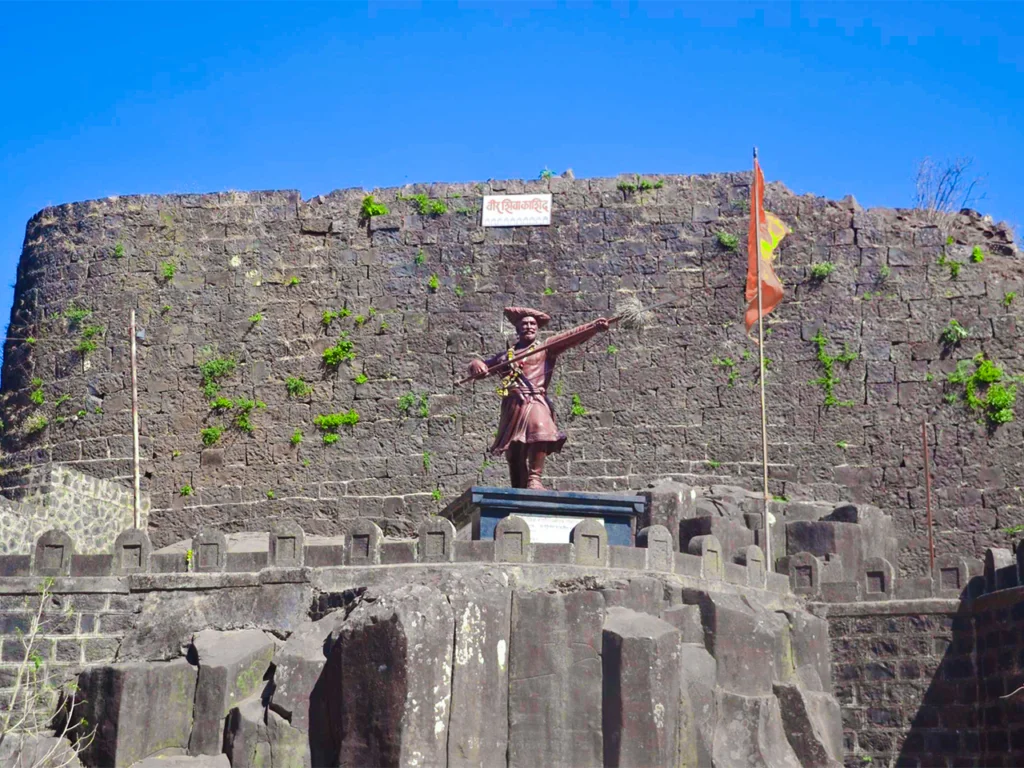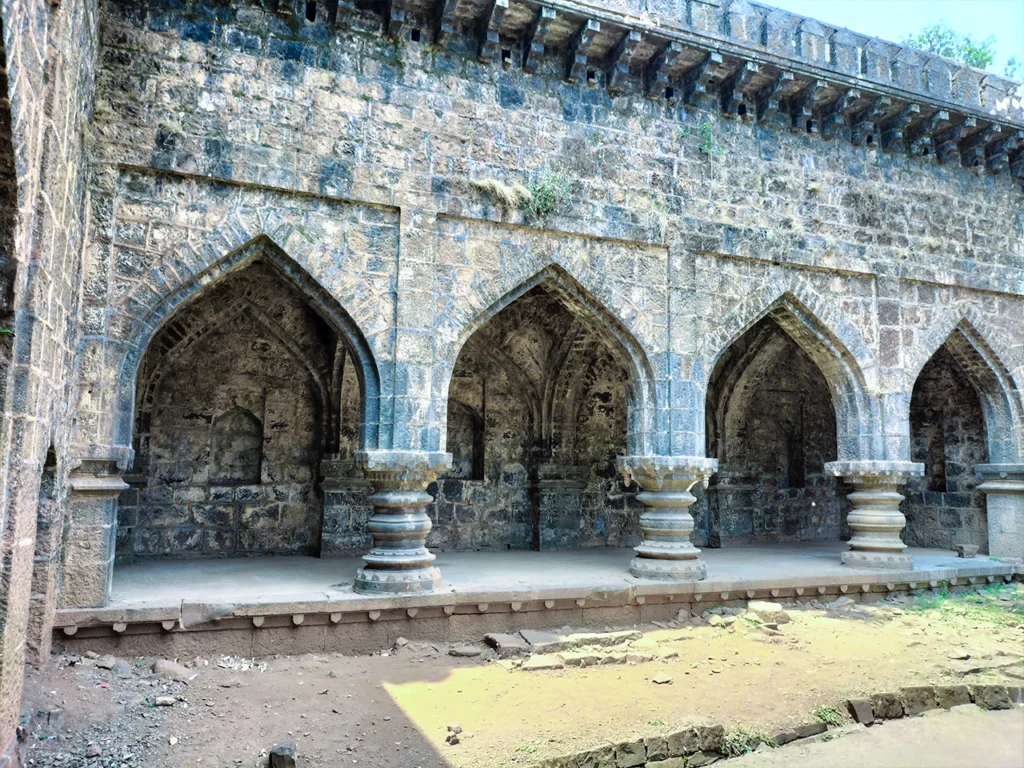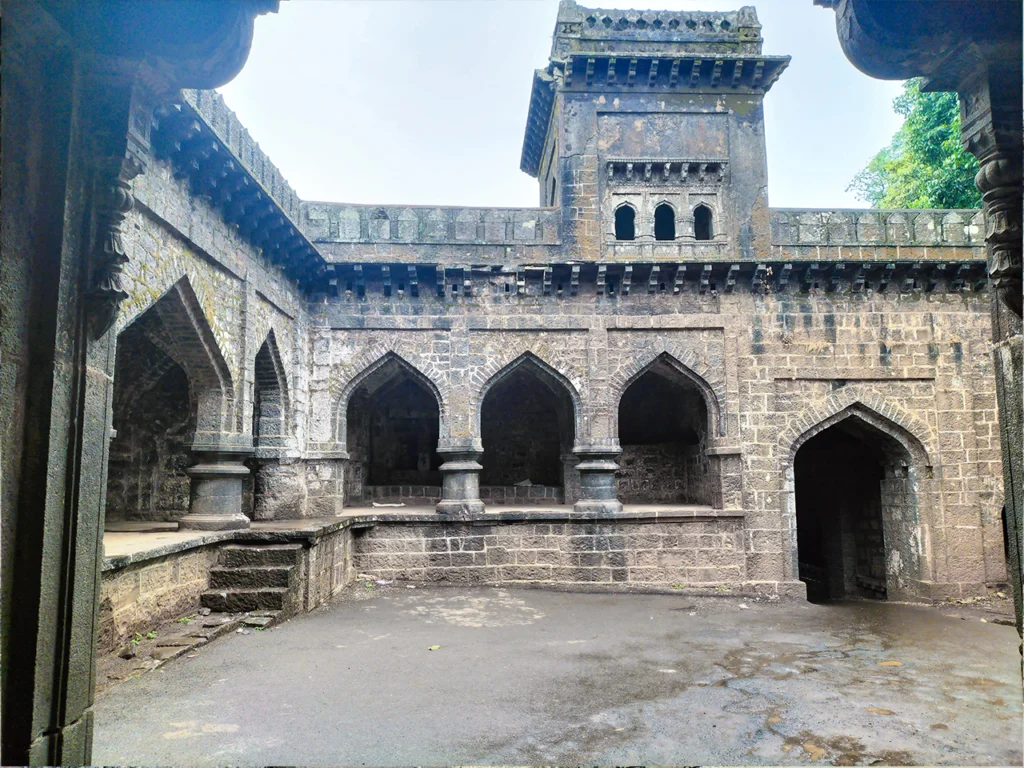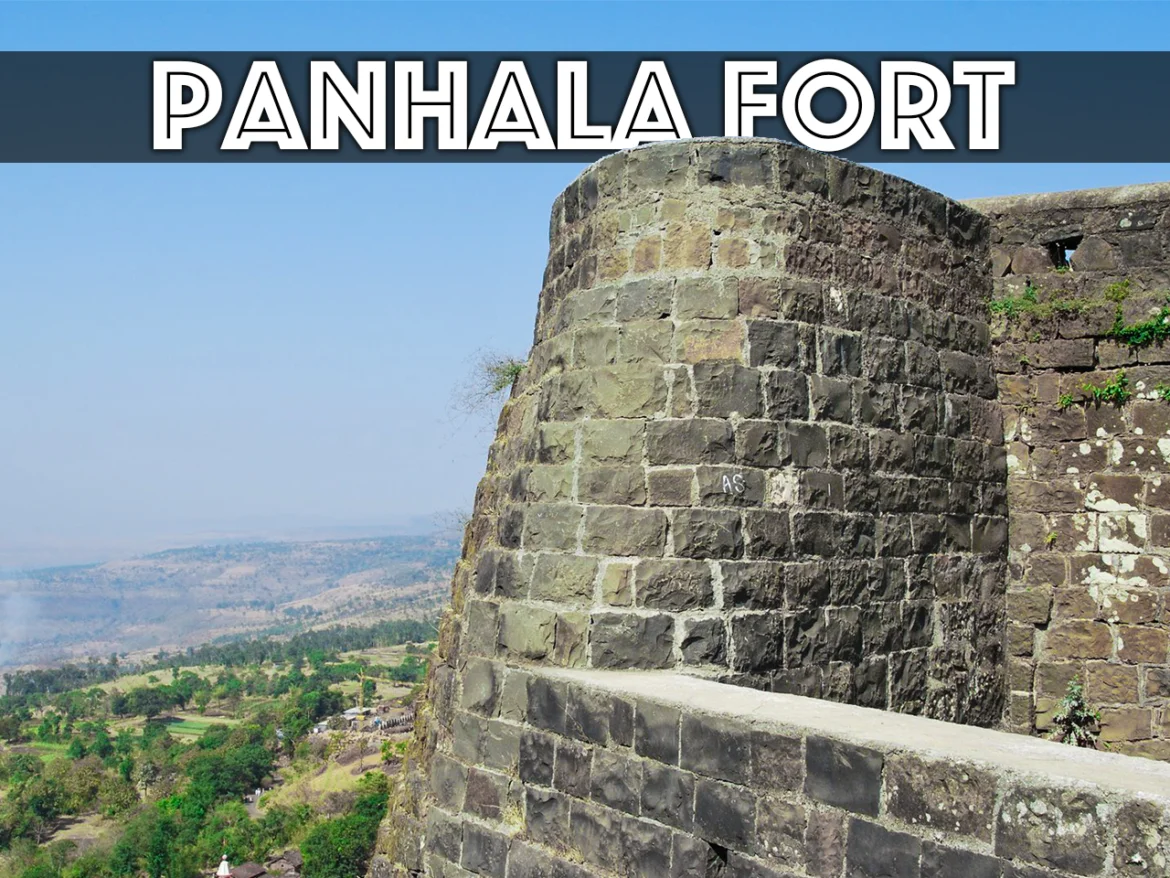Panhala Fort is one such location in Maharashtra that holds a lot of historical as well as cultural relevance. It is one of the popular destinations that you should visit in Maharashtra. You will get a lot of ideas about the history of the state as well as the historical events after a visit to the Panhala Fort Kolhapur. Also the architecture and the features of this fort are worth mentioning too. In this article I will mention all the Panhala Fort information that you need to know to plan a visit there. So keep on reading about this fort.
Panhala Fort
Where is Panhala Fort?
Panhala Fort is located 20 km northwest of Kolhapur in the state of Maharashtra and it is one of the largest forts in Deccan.
Timings of Panhala Fort: 6 am to 6 pm
Entry fee of Panhala Fort: No entry fee
How to reach Panhala Fort?
Kolhapur is the nearest city to reach the Panhala Fort. Nearest Airport is the Kolhapur Airport which is about 25 km away and the nearest railway station is Kolhapur railway station which is 27 km away from the fort. From Kolhapur you will get buses to Panhala that will take you about 2 hours to reach here. Also you can travel from Mumbai or Pune as well to reach this fort. From Pune the distance to the fort is about 232 km and it would take around 5 hours to reach here via Mumbai- Satara Highway. From Mumbai the distance to this fort is 375 km and it would take more than 7 hours and 30 minutes to reach there by road.
Best time to visit the Panhala Fort
According to the weather you can ideally visit here any time of the year. The temperature remains moderate most of the time so that would not be much of an issue. However the monsoon season is not ideal for a visit to this fort. The trekking trail gets really slippery and it can be inconvenient as well to travel during the rains. You can choose the winter season for the best experience to visit here.

Overview of Panhala Fort
Panhala Fort or Panhalgad or Panhalla Fort literally means the home of serpents. One of the massive forts in India, the strategic location of this fort makes it an alluring location for visit. Because of the zigzag structure of this fort the fort also has a name, the Fort of Snakes. Moreover this fort is one of the forts that holds a lot of relevance culturally and historically. At one point of time this fort also served as a major trade route within Maharashtra from Bijapur due to its strategic location across the Arabian Sea Coast. For history buffs and nature lovers this fort can be one of the ideal destinations that you can visit. Also one thing that is popular here is trekking. Amongst trekkers also this is a popular spot and adventure lovers find it alluring to visit this location.
This massive fort has around 7 km of fortification with guarded three double walled gates. And these gates are massive in size. You will find bastions, parapets and ramparts dotted around this fort along the green slopes of Sahydri. At various times various rulers have ruled over this fort like the Marathas, Mughals and Bahamas. This fort has served as the residences of the great Maratha ruler Shivaji Maharaj and the Queen Regent of Kolhapur, Tarabai. The Indo Islamic architecture of this fort is one of the most alluring features of this fort.
Who built Panhala Fort?
Raja Bhoja founded the Old Panhala Fort in the 12 century during the period of 1178 to 1209. Later however the Marathas modified the fort when they were ruling over the fort.
Panhala Fort Story
King Bhoja II of Shilahara built this massive fort along with 15 others between the years of 1178 to 1209 BCE. The main aim behind the building of this fort was proper administration of the fort. However during that time many times the political significance and ownership of this fort changed. And because of that the fort witnessed the rule of so many rulers. After the rule of Raja Bhoja the Singhanias took over this fort as the new rulers. Also they were the most powerful among the Devgiri Yadavas. Later during the 1400s the Bahamanis of Bidar started ruling over this fort. For more than a hundred year till 1500 the major fortification took place in the fort. From the creation of complexes to bastions and ramparts everything happened during the rule of Adil Shahi Sultanate of Bijapur.
After the death of the general of Bijapur, Afzal Khan in 1659 the fort was under the rule of the Marathas. The great Maratha king Chhatrapati Shivaji took over this fort. During his reign for 20 years this fort flourished to its fullest until his death. A 52 kg bronze statue of the king is also there inside the fort to honour his efforts and his rule. However after his death there were new opportunities for the opponents to seize over the fort. At first in 1680 after the death of Shivaji the power went to his son Sambhaji in 1689. After the fall of Raigad, Panhala was the de facto capital of the Marathas as well.

What’s more?
It was the Mughals then who set their eyes on this fort. Mughal emperor Aurangzeb tried to attack this fort to gain power and control over the Panhala Fort. During that time the Panhala Fort was under the rule of Rajaram’s widow Tarabai. She had established an autonomous rule along with a separate state of Kolhapur. The Panhala Fort was the main centre of power and the capital of that state. During the first few formative years Tarabai stayed in this fort and soon she got the support and won over the trust of the officials as well as the subjects.
Later in 1827 the Fort came under British rule. But in 1844 a British Colonel was held hostage inside this fort. That incident changed the course of this fort. The British forces kept this fort under guard till 1947 that is the time of Independence of India.
Architecture of Panhala Fort
One of the most striking features of the architecture here are the Panhala Fort Points. These portions of this fort make it one of the most unique forts too.
Andhar Bhavadi
One of the chief feature of the fort the Andhar Bhavadi makes this fort very unique. Adil Shah commissioned most of the fortifications here and he wanted a fort within the fort itself. The idea was to handle the emergency situations like that. Andhar Bhavadi means Hidden Well. Basically this was a three storey structure that was used for the main water storage. And this was kept away from the enemies as well in order to protect it from poisoning by the enemies. This area also has its residential quarters and soldier posting recesses as well. Other than that there were escape routes that lead to outside the fort as well. Also, the Bhavadi acted as the second level firewall for the protection of the core of the fort.
Ambarkhana
Located at the centre of the fort Ambarkhana were three granaries. The Bijapur style of architecture is followed in the making of these granaries. The three granaries are Ganga, Yamuna and Saraswati Kothis. Amongst these the Ganga Kothi was the largest and it had the capacity to hold 25, 000 Khandis. Here 1 Khandi is equal to 650 lbs.
This covers a total area of 950 sq km with a height of 10. 5 meters. There were stairs on both the sides by which one can lead to the top of the buildings. In total there are 16 bays and each of them has their own vault which is flat. Also on each of the granaries there were holes on top which were used to put the grain inside. There is a domed structure on the eastern entrance as well along with a balcony. Further this balcony has plasterwork following the Bijapuri style. These granaries helped Shivaji Maharaj to sustain a long seize of 5 months of Siddhi Johar that happened just before the famous battle of Pavan Khind.
Kalavantinicha Mahal
Basically this one is a terrace room used for the courtesans. At present the structure is in ruins after the British dismantled it. However you can still notice the beautiful ornate inscriptions on the wall. There are intricate carvings on the ceilings as well that is like a major attraction for the tourists. During the Bahamani rule they used this Mahal as the residence of the court ladies.
Sajja Kothi
This one is a one storied structure and Ibrahim Adil Shah built this in 1500 CE as a viewing pavilion overlooking the valley. This chamber also served as the imprisonment chamber for Shambhaji on the basis of orders of his father Shivaji.
Teen Darwaza
The Panhala fort is also famous for its Teen Darwaza or Three Doorways. These massive doorways were used for both welcoming the guests as well as the enemies. Teen Darwaza was the first doorway and on the first entrance you will find Persian inscription along with various carved motifs including the motif of Lord Ganesha, who is one of the worshipped deities of the Marathas. The British had destroyed the second door which is the Char Darwaza during one of their sieges. The last one, the Wagh Darwaza is more like an illusion. It has a small courtyard behind it. Most of the enemies used to be trapped and defeated here when they tried to intrude.
Rajdindi Bastion
This is one of the secret exits from this massive fort. Mainly Shivaji Maharaj used this exit during the Battle of Pavan Khind. This is one of the very few structures in Panhala Fort that still stands intact for the visitors to witness.

Current status of the fort
The palace of Tarabai is one of the structures that are still standing with its old charm. At present this area is used as a school along with some government offices and a boy’s hostel. Most of the fort is in ruins today. However still this is one of the popular hill stations that a lot of tourists love visiting. It is also a protected area where a lot of monuments are protected under the Archaeological Survey of India. Some temples and mausoleums are also present here. Some of the notable ones are Sambhaji Temple, Ambabai Temple, Someshwar Temple, Mahakali Temple, Mausoleum of Jijabai etc.
Wrapping Up!
Now that you have all the information about Panhala Fort just plan a trip there as soon as you can. After all, a destination like this should not be missed out. Let me know if this article on Panhala Fort is helpful for you in planning a trip to the location.

